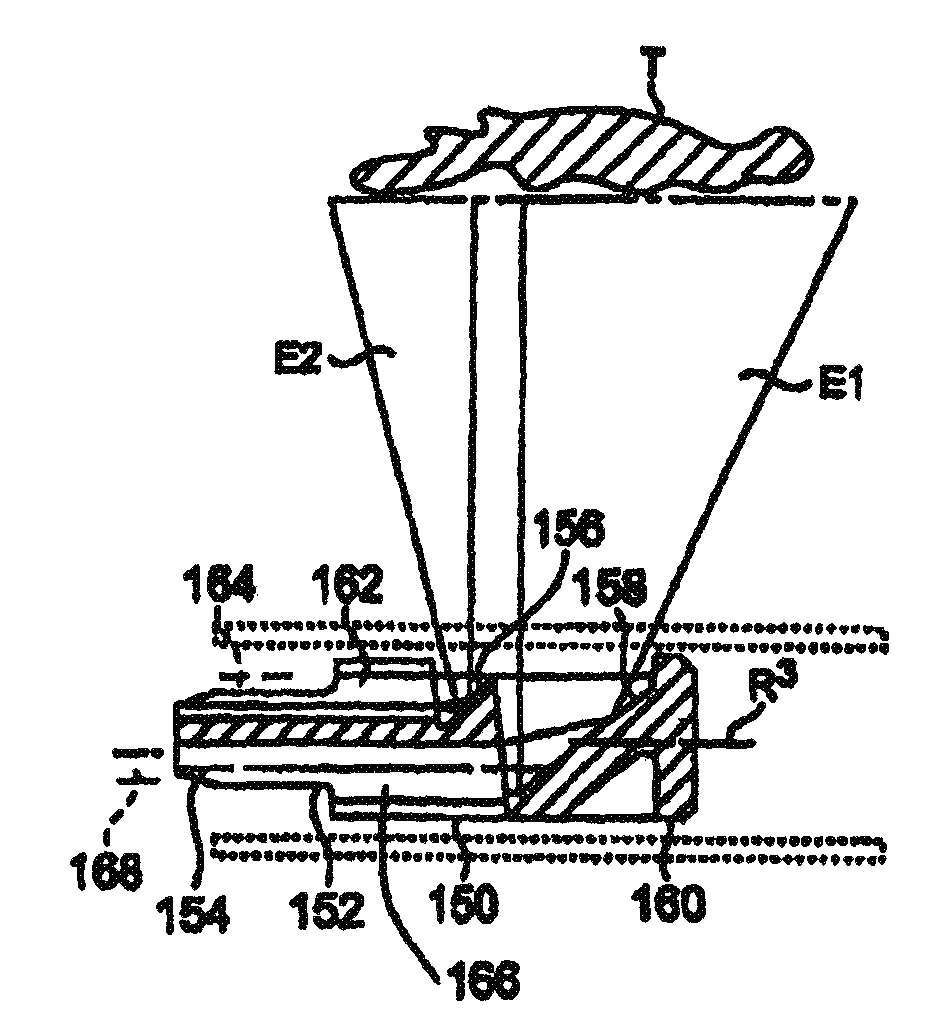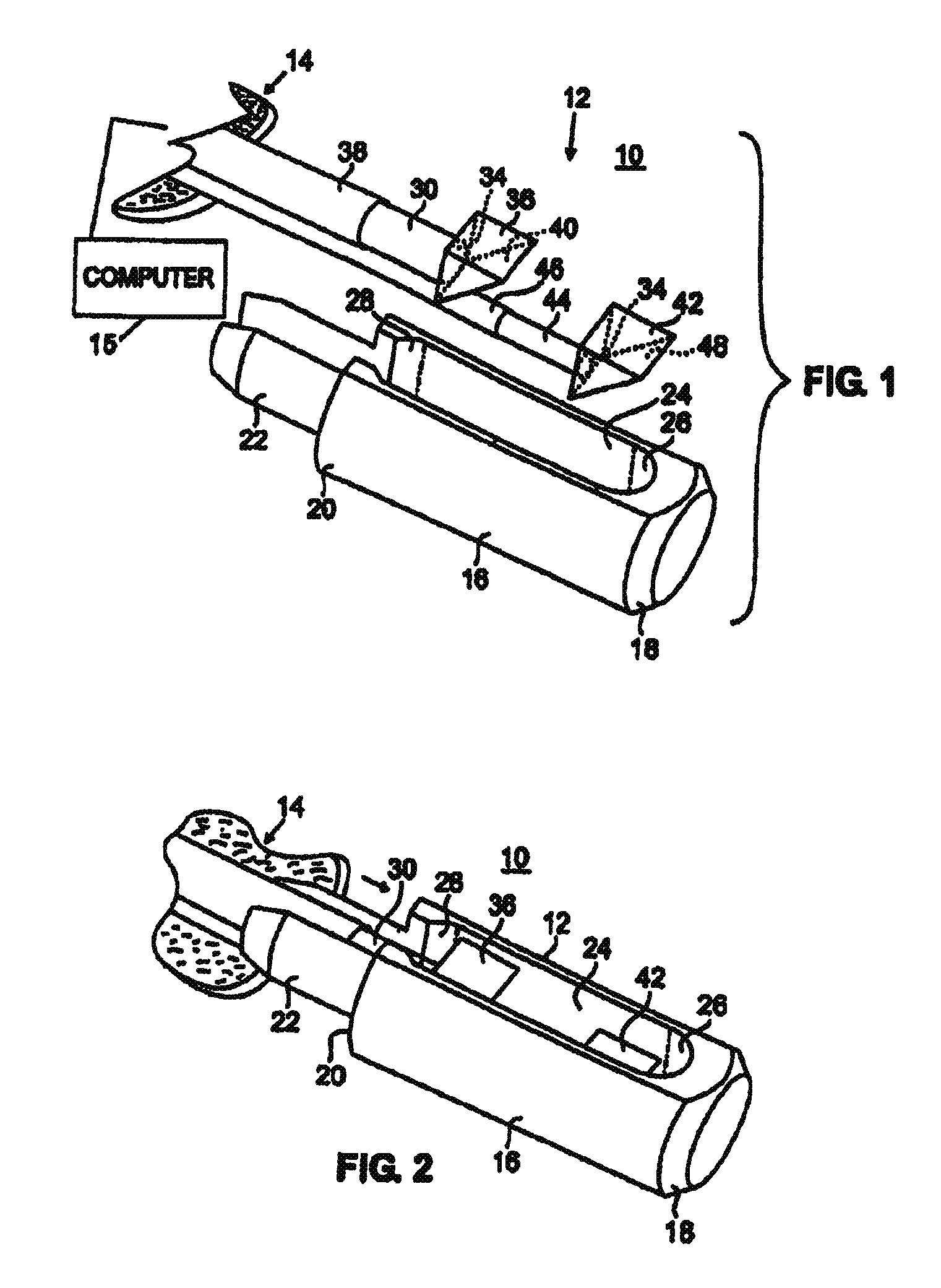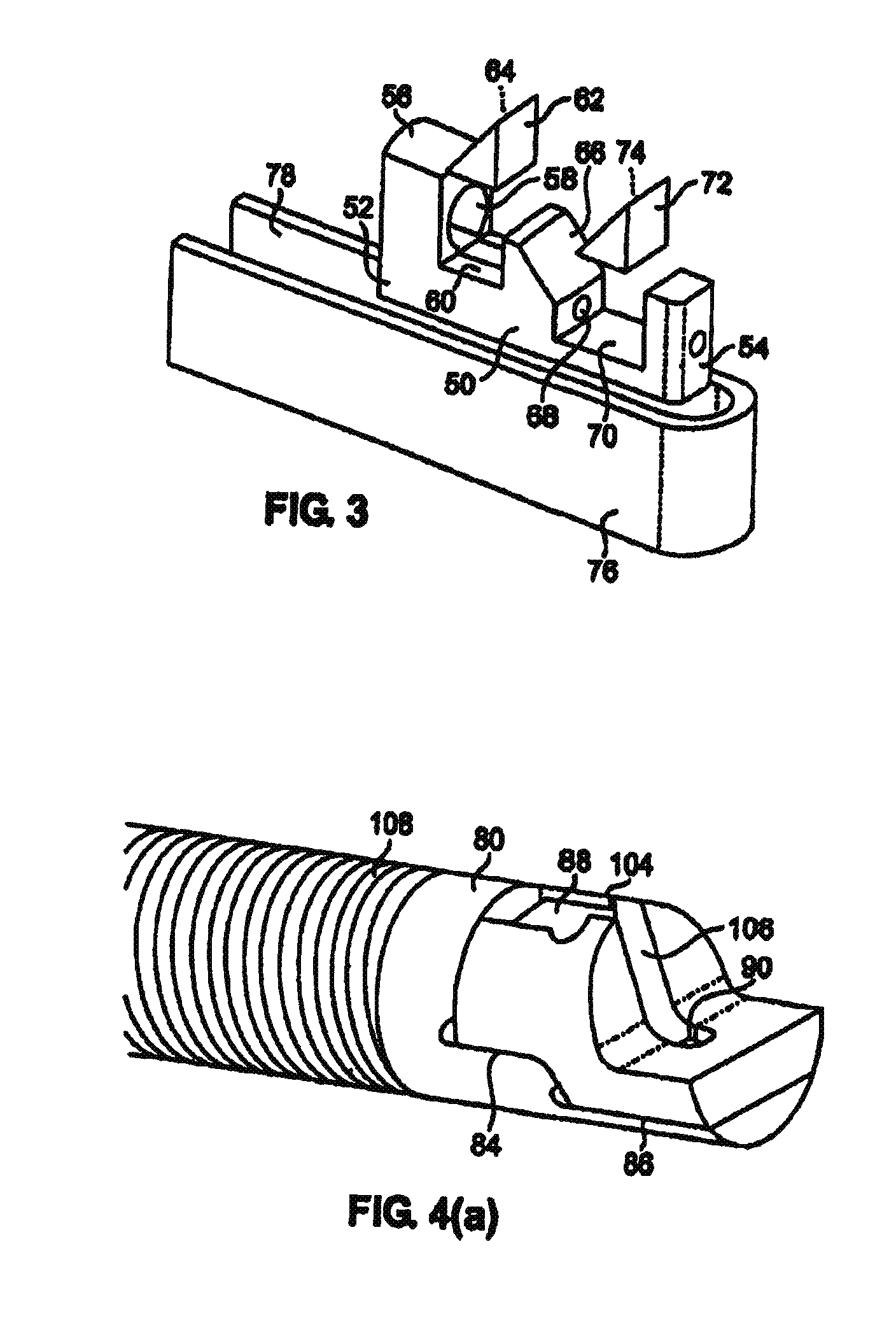Catheter probe arrangement for tissue analysis by radiant energy delivery and radiant energy collection
a catheter probe and tissue analysis technology, applied in the field of photomedical devices, can solve the problems of desirous in vivo intravascular environment sensing and treating various tissue characteristics, and achieve the effects of minimizing optical analysis and tissue treatment, accurately aligning reflective surfaces, and reducing back reflections
- Summary
- Abstract
- Description
- Claims
- Application Information
AI Technical Summary
Benefits of technology
Problems solved by technology
Method used
Image
Examples
Embodiment Construction
[0039]Referring now to the drawings in detail, and particularly to FIG. 1, there is shown a first embodiment of the present invention which comprises a catheter tip apparatus 10 and a method of use of that apparatus 10 to provide an analysis of body tissue using an energy spectrum analysis distributed and received by an elongated probe 12 introducable through a catheter sheath 14 into that body tissue. That introduction of the catheter sheath 14 and body probe 12 may be done through an endoscope, or other catheter-like devices, not shown, for such energy diagnosis and treatment of tissue by a proper computer apparatus 15. The energy analysis and treatment might include fluorescence spectroscopy, near infrared (NIR) reflectance spectroscopy, Raman spectroscopy, and optical coherence tomography, photodynamic drug activation, photonic ablation and thermal treatments.
[0040]The probe 12 of the present invention comprises an elongated, generally cylindrically shaped housing 16, as shown i...
PUM
 Login to View More
Login to View More Abstract
Description
Claims
Application Information
 Login to View More
Login to View More - R&D
- Intellectual Property
- Life Sciences
- Materials
- Tech Scout
- Unparalleled Data Quality
- Higher Quality Content
- 60% Fewer Hallucinations
Browse by: Latest US Patents, China's latest patents, Technical Efficacy Thesaurus, Application Domain, Technology Topic, Popular Technical Reports.
© 2025 PatSnap. All rights reserved.Legal|Privacy policy|Modern Slavery Act Transparency Statement|Sitemap|About US| Contact US: help@patsnap.com



